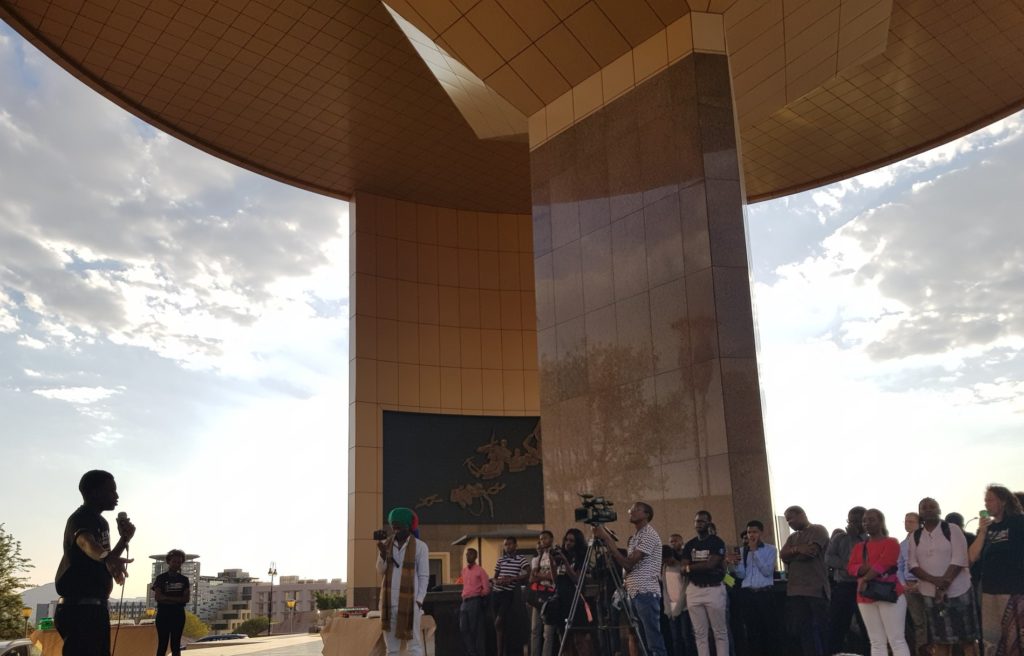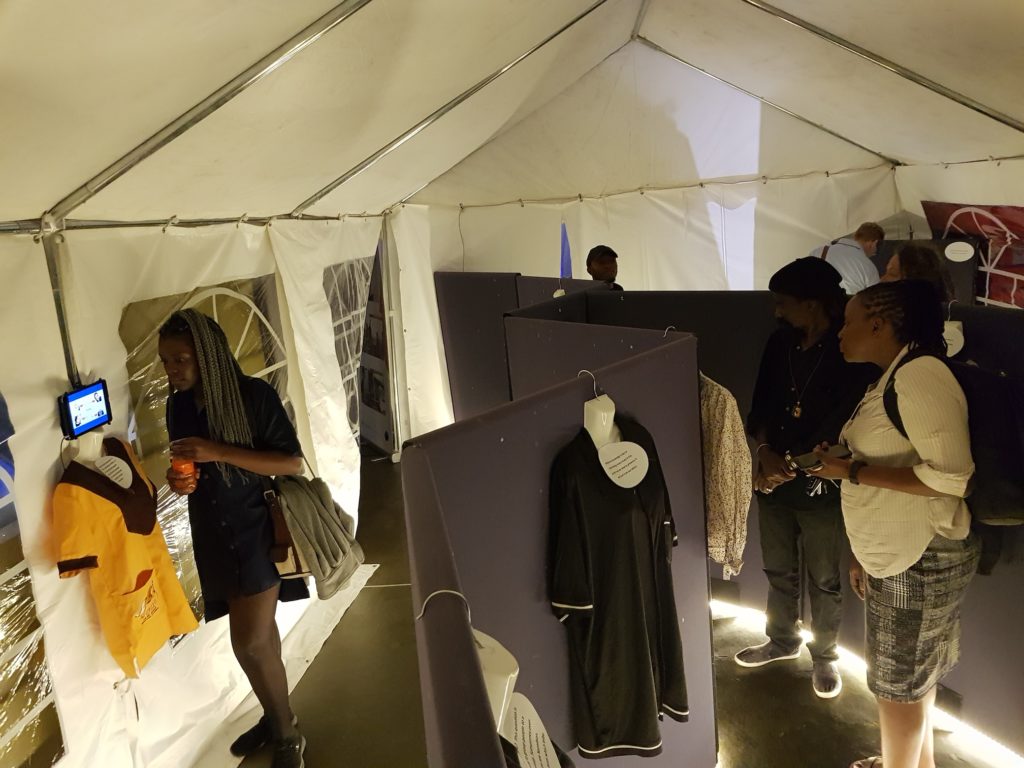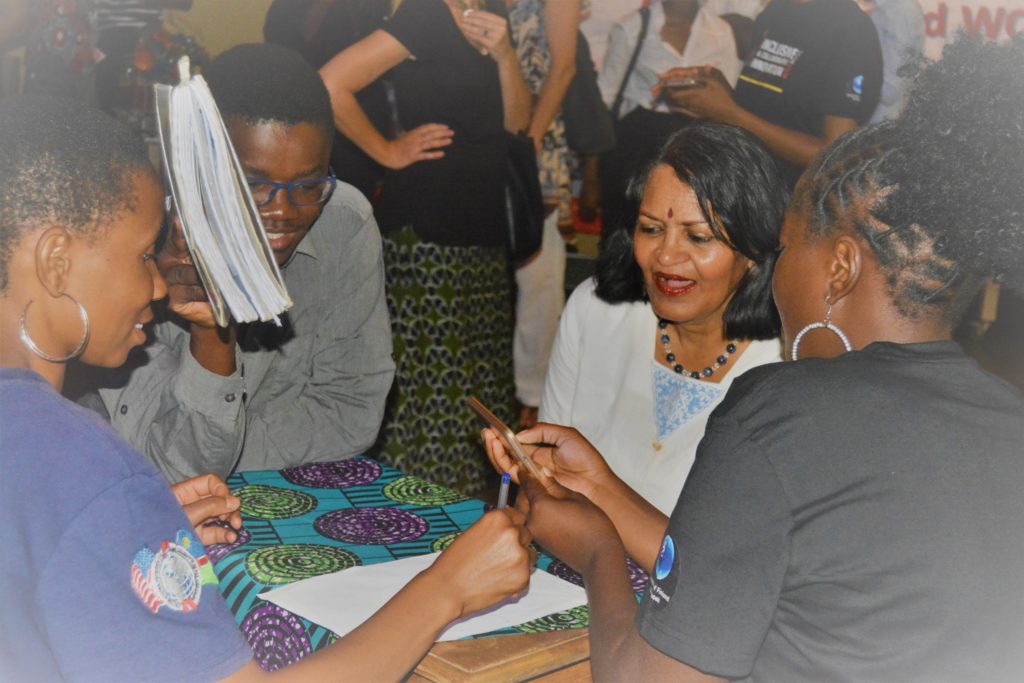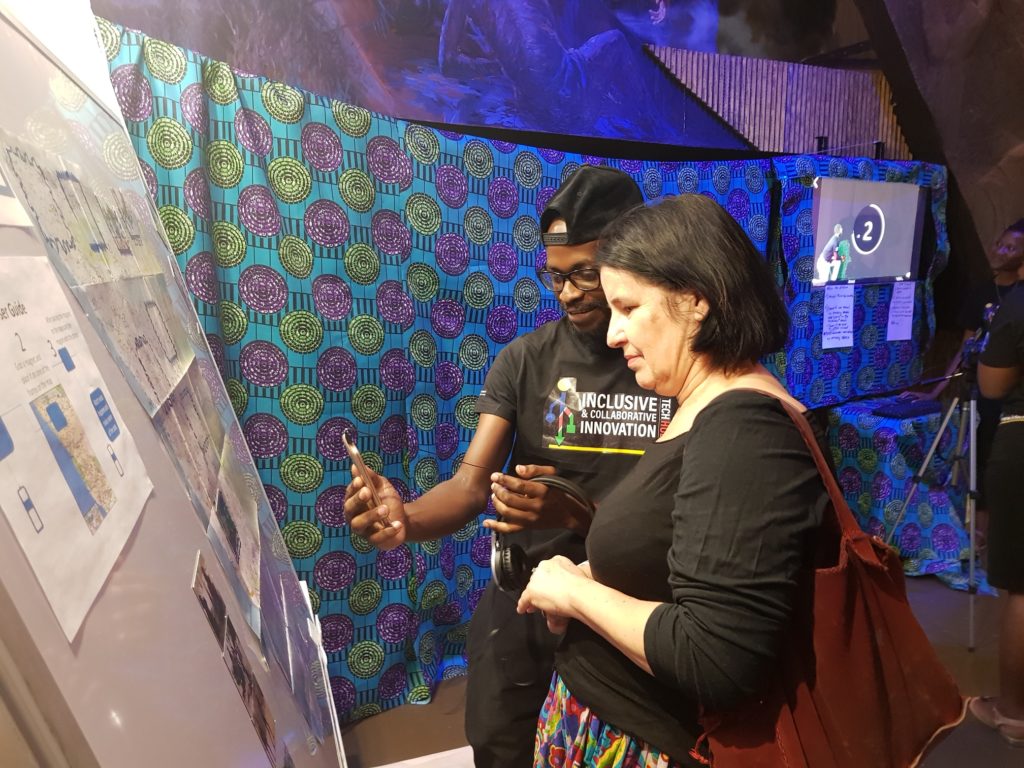
Technology amplifies Namibian Born Frees’ voices

What do you get when you ask a group of young Namibians -born frees- to design an exhibition to express how they feel living in a postcolonial society? An exhibition that tries to share those feelings with the visitors and to get the visitors to explore and communicate their own feelings? An exhibition that uses technology to do all this?
The Inclusive and Collaborative Tech Innovation Hub has some fresh experience of working with the questions above, as we recently supported the development of an interactive technology exhibition called Postcolonial Narratives of Born Frees [add link to event page where the entire exhibition is described. This is the page Martha is working on].

The exhibition was spearheaded by Asnath Paula Kambunga, a Namibian PhD researcher at Aarhus University in Denmark. Asnath collaborated with ten born-free Namibian youths (young people born after the Namibian independence in 1990) to study how memories of colonialism are affecting them, and how can the youth imagine different futures given the present circumstances.
Some of the participants came from local community organisations while others were individuals with interest in postcolonial and youth matters. Together, they spent five months charting how the past is impacting their daily lives, what they feel about it, and how they could communicate their thoughts and feelings with others through an interactive technological exhibition that combines physical artefacts with digital technologies.

The Tech Hub supported the exhibition by lending to the process curation support as well as some of its technology adaptations and innovative concepts. These included Spin Da Bottle, The Room , and augmented reality magnets. Distinct installations, such as a soundscape simulating opinionated noises, two augmented reality installations displaying indigneous wisdom at the fireplace and making sense from the past in mapping history, respectively, as well as a photo booth and a provocative questions game were created by computing students from Namibia University of Science and Technology (NUST).

The exhibition, which was staged in the Independence Memorial Museum for two weeks, was much praised by visitors. For example, Jane Henderson, professor of conservation visiting Namibia from Cardiff University in the UK, described it on Twitter as ‘some of the best museology I have ever witnessed’. Many Namibian visitors commended the exhibition for having made them to look at the past in a new way, as well as for giving ‘an excellent visualisation of our everyday lives’ and ‘an insight to Namibia not found anywhere else’.
For more information on the exhibition, kindly contact Asnath Paula Kambunga akambunga [at] cc.au.dk. For more information on the Tech Hub support to the exhibition, kindly contact Marly Samuel [at] marly18samuel@gmail.com.
Comments are closed.